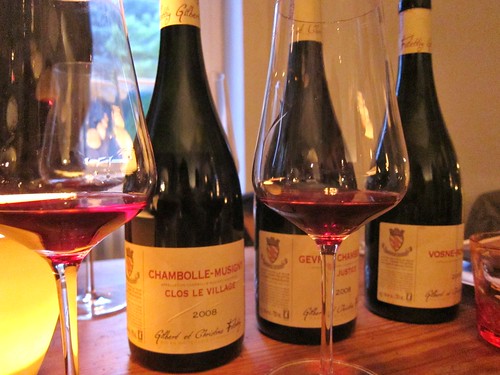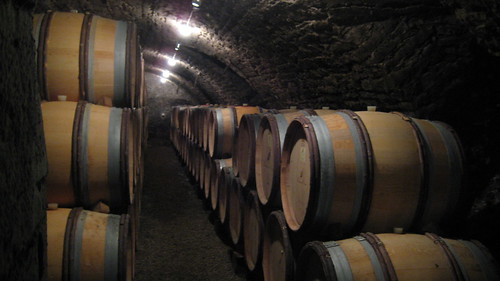Usually I don’t do mockery, and please don’t take this post as such. Actually I laugh about this picture as I’d laugh about some of my own mistakes.
buy diflucan online www.mabvi.org/wp-content/languages/new/usa/diflucan.html no prescription
And I guess even the maison Joseph Drouhin might smile about this quite original spelling of its name (seen in an upscale Chinese restaurant in Shanghai).
Foseph Diouhin: a Chinese copycat of Joseph Drouhin?
Gilbert Felettig Burgunder-Probe in Frankfurt
Lange muss man in der deutschen Spätburgundersparte stöbern um Qualitäten zu finden wie sie im Burgund in die Flasche gebracht werden.
So war ich auch sehr glücklich bei einer kleinen Probe im Weinsinn, einer netten und stylishen Weinbar im frankfurter Westend teilzunehmen. Dorthin hatte der Weinhändler Tour Du Vin geladen um die Weine ihres burgundischen Flagschiffwinzers Gilbert Felettig vorzustellen, und diesen auch mitsamt seines Vaters gleich mitgebracht.

Der Winzer: Gilbert Felettig
Read the rest of this entry »
Impressions from Burgundy
On the First of September I attended a wedding in the heart of Burgundy while harvest was already in full swing. Besides celebrating the wedding in the church of Gevrey-Chambertin and having a toast on the couple with delicious wines in the Château de Marsannay, I was of course constantly surrounded by fantastic impressions of a legendary wine region. Unfortunately the sky was overcast – nevertheless, here are some pictures.
buy symbicort online alvitacare.com/wp-content/languages/new/where/symbicort.html no prescription
Very Old Burgundies!
Let’s just start by saying that this was an evening to be remembered. We were all kind of excited since it was the first time we drank such old wines. Our big fear was that all these bottles have turned bad in 3 decades. But on the other hand, these bottles came straight from the Côte D’Or into Oskar’s perfectly aerated cellar, where they got a long rest. So if they turned bad, it would have been fate.
We started our journey through the seventies with a 1969 Gevrey Chambertin from Ets St-Ferdinand (Mercurey). First of all, 1969 is supposed to be one of the best burgundy vintages according to idealwine.com (“1969 est situé parmi les meilleurs millésimes du siècle en Bourgogne”). This statement made me very curious and luckily the cork came out easily (in 2 pieces though). We chose not to decant and poured it straight. Instantly, the very light red, nearly orange colour impressed us. The fact that it wasn’t brownish indicated us that it might not have turned bad, but the paleness still witnessed its age. The nose was a little blunt at the beginning which we thought was normal considering that it hasn’t seen lots of fresh air in 37 years, but with a little nose-effort we could still smell some cherry. When we tried the wine a bit later the nose opened up a bit, and revealed in a sweet kind of way notes of wild berries, strawberries and even raspberries and violets; a hint of wood also came across.
buy elavil online pharmacohealthcare.com/wp-content/themes/twentysixteen/inc/engl/elavil.html no prescription
On the palate the wine appeared soft and round with a very nice berry-fruit taste followed by a great length.
This was definitely the oldest “sill good” red wine I ever drank, and the fact that it hadn’t turned bad made us optimistic on what was to follow.
Our second bottle, a 1972 Grande Réserve de Bourgogne from Jacques Selot (Puligny-Montrachet) caused little more problems at the beginning. The cork dissembled into thousand little pieces and thus I had to decant the wine. But once poured in the carafe it appeared with such a nice dark, kind of youthful colour, we knew it couldn’t be bad. We approached our nostrils: the nose was rather discrete in the beginning, but reminded leather and underwood (does this word exist?); some red currant fruit followed after a while. On the palate it felt at the same time powerful and balanced with red currant, unripe strawberry and black cherry aroma, accompanied by a tangy, peppery touch. The wine diffused nice warmth but the length was somewhat shorter than the first one.
Then followed a 1975 Cuvée La Dame Marguerite from Ets St-Ferdinand (without label) Here again uncorked without any problem. How lucky can one be? The colour appeared even darker than the last one. So dark even, I would have guessed it a 2000 vintage rather than a 75. The nose wasn’t overwhelming, but one could distinct red berries and a hint of freshness. On the palate then it was a real stunner and confirmed our impression from the colour. It was a youthful wine with lots of power; with a thick texture, a wine you could chew, a real “mouthful” of wine. It had the muscles of a young wine, without the incisiveness of the tannins and other sharp edges. The aroma was more in the very ripe dark fruits/berries direction, but underlined by many other aromatic impression which earned the wine the label “complex”. It had a tangy body with a light cinnamon touch and an ending with liquorice scents. The length was medium long with a slight bitter note being the only downer in this fascinating wine. I guess this was my favourite!
Our next bottle, a 1977 Santenay 1er Cru Beauregard, Ets St-Ferdinand is from a Premier Cru vineyard which is adjacent to “Les Gravières” and “La Comme”, the 2 best 1er Cru lots in Santenay according to my wine atlas. So this sets expectations a tick higher from the beginning I guess. The wine was a bit lighter in colour than the 2 before but had the most alcohol of all bottles (we deducted this from the tears running down on the inside of the glass; none of these wines had the alcohol content on its label by the way). The nose was very strong in the red berries direction but also a little blunt at the same time.
buy symbicort online pharmacohealthcare.com/wp-content/themes/twentysixteen/inc/engl/symbicort.html no prescription
Oskar identified a hint of fig, which I had a hard time to smell, given we arrived at the fourth bottle. But on the palate then it wasn’t difficult to sense a real fruit explosion of red currant and figs, accompanied by the power and the warmth of the remaining alcohol. And this time it finally had a little taste of age; not that we like this type of aroma, but we were a bit surprised we didn’t have it yet, with such old bottles.
buy amoxil online pharmacohealthcare.com/wp-content/themes/twentysixteen/inc/engl/amoxil.html no prescription
The finish then was herbal with rosemary, thyme and tea notes, but also with a minor bitter tone. Again, a very satisfying bottle!
Finally our last bottle was a Cuvée La Dame Marguerite 1979, Ets St-Ferdinand a younger version of our third wine and we were curious how they compared. At first it didn’t appear as dark as the 1975. The nose then had a little note of age, but one could still smell fruit in the background. On the palate it showed fruit in the red currant direction underlined by much more acidity than in the 1975 vintage. The finish had a little bitterness and a rather unsatisfying length. This was in my opinion the least interesting wine of the evening. It was impressive to notice though that this 1979 appeared much older than the 1975 which had a youthful personality.
In the end we felt very lucky. It is a nice feeling that all these bottles were in such a good shape and that none had turned bad or was corked. Actually this tasting has beaten all expectations. At least 2 or 3 of the wines were true revelations to us. Again a big thank you to you, Oskar! I guess my lesson of the evening was: “it is worth letting age good bottles”.



